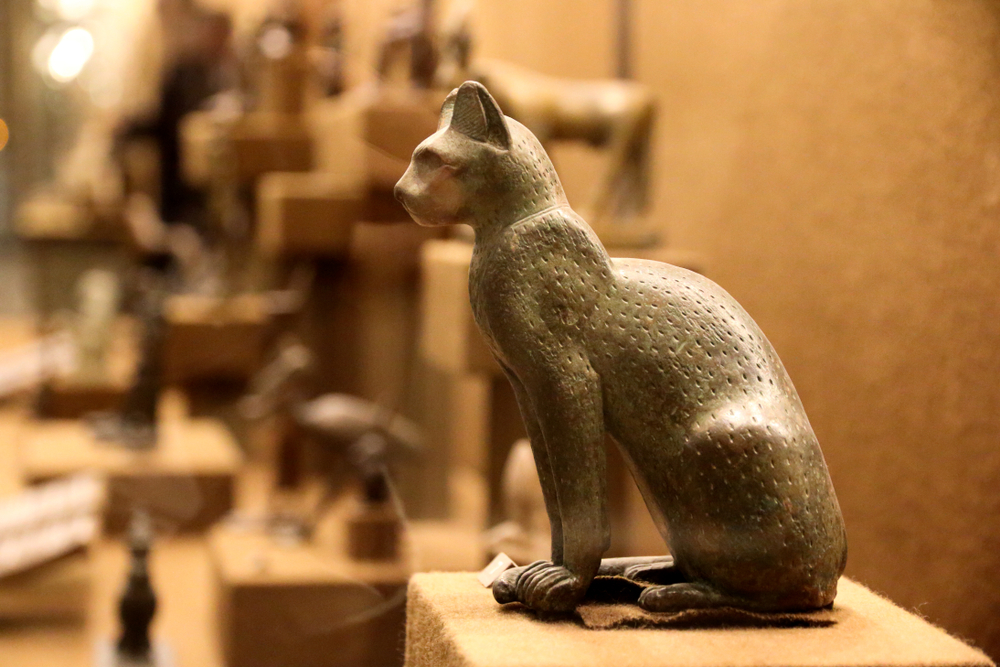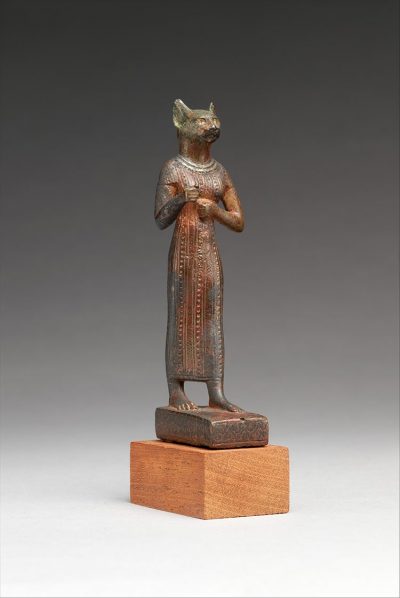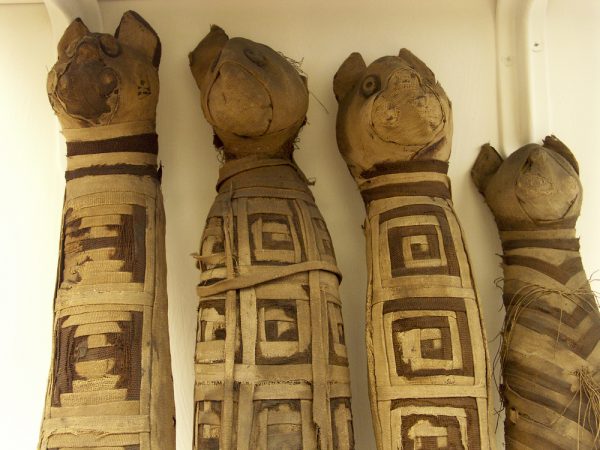Cats in Ancient Egypt
Cats in Ancient Egypt
Cats in Ancient Egypt
-
Hannah
-
Hannah

The Egyptians revered several animals, but none more so than the cat. Their independence and fierce and loyal nature made them admirable; they were adept at killing mice and snakes; they were considered lucky, imbued with magical powers; they symbolised protection and divinity.
People in ancient times saw animals as incarnations of gods. Cats were the incarnation of Bastet, the goddess of protection, perfume/ointments, fertility, pregnancy, children, music, the arts, warfare – and cats. She was originally depicted with the head of a lion, but over time this became the head of a cat.
The city of Bubastis in the Nile Delta was the heart of the cult of Bastet. Bubastis translates to House of Bastet. There, a grand temple devoted to the goddess was built, drawing people from all around to pray and make offerings.

Bastet statue, late Ptolemaic period
We know much about cats in Ancient Egypt from the many, many depictions of them found in tombs and temples, in art, in statues and in jewellery. In many ways, they were treated with great respect. If you killed one, you could be sentenced to death. If you were royal and kept a cat of your own, you would shower it with treats: it may eat from your plate, it may wear a gold, bejewelled collar.
When a cat died, it would often be mummified, to be buried when the time came with its master. According to the Book of the Dead, this would ensure both master and cat would cross into the afterlife, and the cat would continue to act as protector to the master.
Some pets were buried in the world’s first pet cemeteries. At the temple in Bubastis, hundreds of thousands of mummified cats were found during excavations.
To lose a cat was to be plunged into grief. According to the Ancient Greek historian Herodotus, their owners would shave off their eyebrows and continue the mourning period until the hairs grew back.

Mummified cats
But death did not always come…gently. The desire to be buried alongside a mummified cat for good fortune in the afterlife may, researchers believe, have led to the breeding of kittens for slaughter. In additions, cats could be scarified as offerings to Bastet. (Source: LiveScience)
Evidently, cats were deeply sacred. And to look at any domesticated cat today, its bearing, its look, its superiority, is to see this sacred nature. All cats are descended from those of Ancient Egypt. They inherently know that they were once so special, and looking in their eyes, it is easy to imagine that they expect to be revered still.
Photo credits: 1) N. Rotteveel/Shutterstock.com; 2) The Metropolitan Museum of Art/public domain; 3) Antonio Petrone/Shutterstock.com.